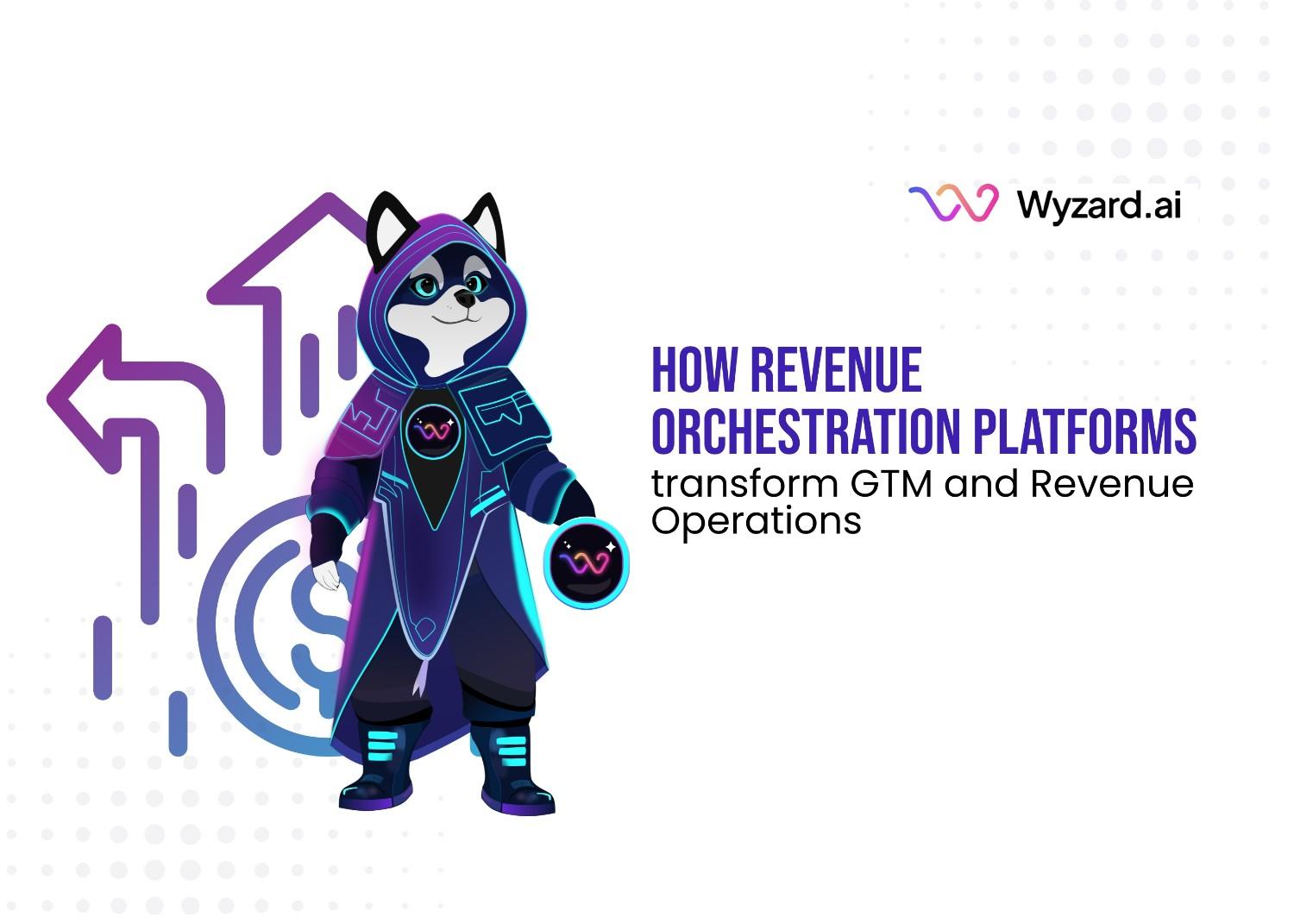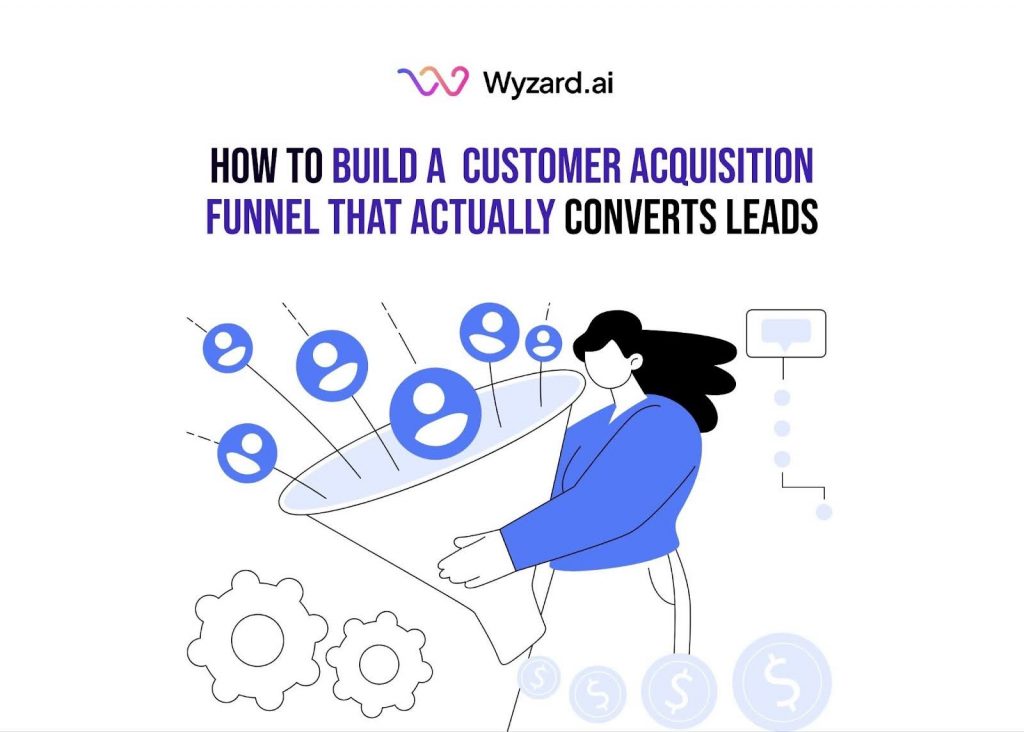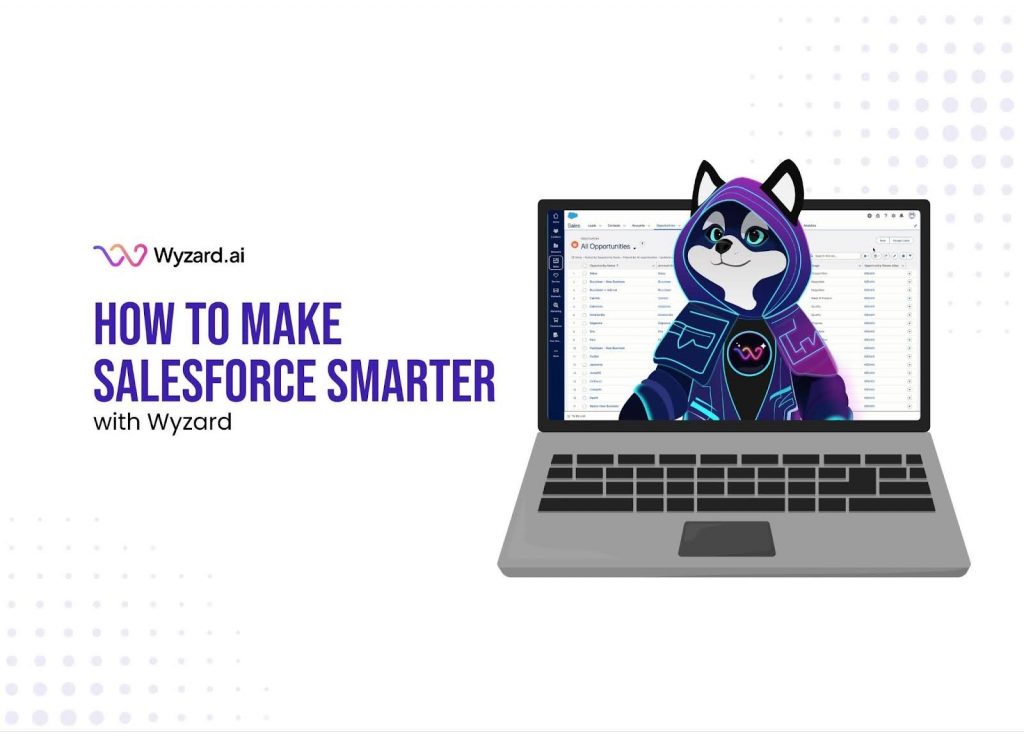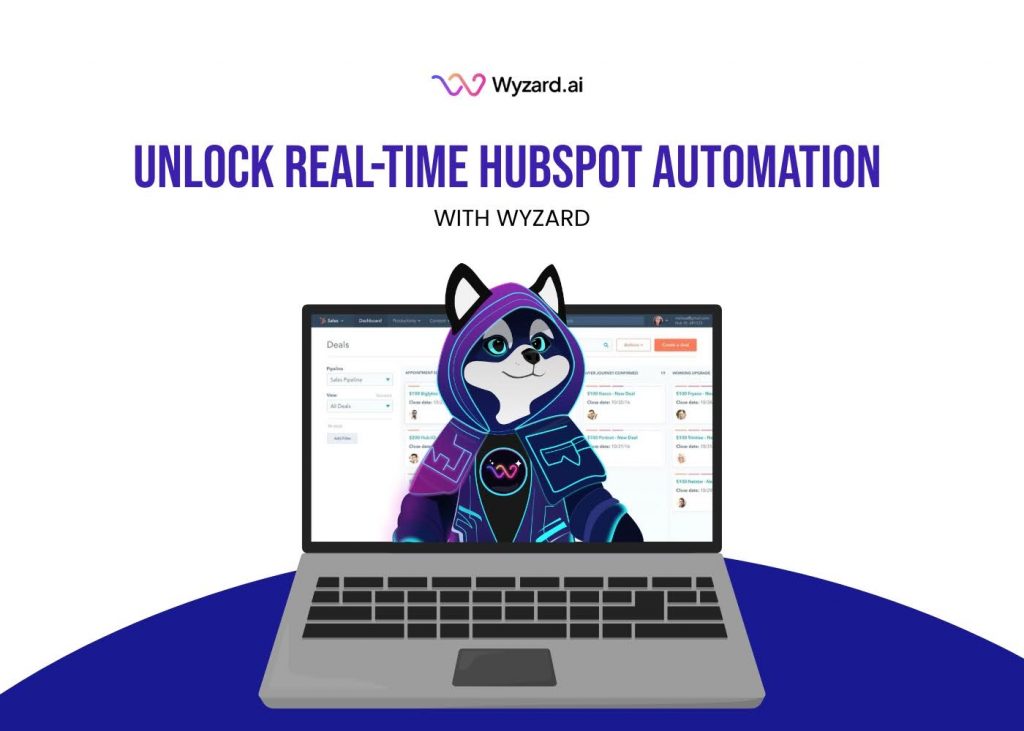You're generating traffic. Leads are visiting your website. But conversions? They're barely moving the needle. The problem isn't your ...
How Revenue Orchestration Platforms Transform GTM and Revenue Operations


Subscribe Now
Your sales team just spent hours manually updating CRM records. Your marketing team generated 500 leads, but sales can’t tell which ones actually matter. Meanwhile, a hot prospect who visited your pricing page three times this week still hasn’t heard from anyone.
Sound familiar? You’re not alone. Most B2B SaaS companies are drowning in signals but starving for action. The problem isn’t a lack of data; it’s that your tools don’t talk to each other, and your teams are spending more time on administrative tasks than actual revenue-generating activities.
Revenue orchestration platforms are changing that equation. By connecting scattered tools, automating repetitive workflows, and surfacing the signals that actually matter, these platforms help GTM teams turn buyer intent into closed deals without adding headcount.
What Is Revenue Orchestration and Why It Matters Now
Revenue orchestration is the process of connecting all your GTM tools and data into a unified system that automatically coordinates actions across sales, marketing, and customer success. Think of it as the central nervous system for revenue generation, capturing every buyer signal, triggering the right response, and ensuring nothing falls through the cracks.
A revenue orchestration platform brings together capabilities that used to live in separate tools: conversational AI chat, sales engagement, conversation intelligence, deal management, and forecasting. Instead of sales reps toggling between ten different applications to close one deal, everything happens in a single workflow.
This matters because B2B buying journeys have become messier. Prospects research on their own time, engage across multiple channels, and expect immediate, personalized responses. When your systems are fragmented, buyer signals get lost. By the time someone manually spots a hot lead, that prospect has already moved on to a competitor who responded faster.
Breaking Down Silos That Kill Pipeline Velocity
The typical B2B SaaS tech stack is a patchwork of point solutions: one tool for email sequencing, another for call recording, a third for lead scoring, and a CRM that’s supposed to tie it all together but rarely does. Each tool captures valuable data, but that data stays trapped in its own silo.
Revenue orchestration software solves this by creating a single source of truth. When a prospect downloads a whitepaper, attends a webinar, and then visits your pricing page, all those signals feed into one platform. Sales sees the complete picture without hunting through multiple systems or relying on delayed CRM updates.
This unified approach eliminates the manual work that bogs down GTM teams. No more copying notes from calls into spreadsheets. No more building email lists by hand. No more wondering if marketing’s “hot lead” actually fits your ideal customer profile. The platform automates data capture, enrichment, and routing so your team can focus on conversations that move deals forward.
AI-Powered Insights That Guide Every Interaction
Data alone doesn’t close deals; action does. This is where AI becomes critical in revenue orchestration platforms. The system analyzes millions of interactions to identify patterns: which email subject lines drive responses, which objections typically stall deals, which engagement sequences convert best for different buyer personas.
Then it surfaces those insights exactly when reps need them. Before a discovery call, the platform might flag that this prospect’s industry typically cares most about integration capabilities. During the call, it can prompt the rep to address common concerns. After the call, it automatically logs activities and suggests the next best action based on what’s worked in similar deals.
This isn’t about replacing human judgment; it’s about augmenting it. Experienced reps still bring intuition and relationship skills that no software can replicate. But now they’re operating with complete information and proven playbooks instead of guessing what to do next.
Automating Workflows Without Losing the Human Touch
One of the biggest misconceptions about revenue orchestration is that it turns sales into a robotic process. The opposite is true. By automating repetitive tasks, these platforms free up time for the high-value human interactions that actually build relationships and close deals.
Consider lead qualification. Instead of SDRs manually researching every form fill to determine if it’s worth pursuing, the dynamic revenue orchestrator automatically enriches lead data, scores it against your ICP, and routes qualified prospects to the right rep, often within minutes of the initial signal. SDRs can then spend their time on meaningful conversations instead of data entry.
The same applies throughout the buyer journey. Automated email sequences nurture prospects based on their behavior. Meeting scheduling happens without the back-and-forth. Follow-up tasks appear automatically after calls. Reps always know what to prioritize because the platform highlights the deals most likely to close or at risk of stalling.
| Traditional GTM Tech Stack | Revenue Orchestration Platform |
| Fragmented tools with isolated data | Unified system with a complete buyer view |
| Manual data entry and updates | Automated capture and enrichment |
| Guesswork on what action to take next | AI-guided prioritization and recommendations |
| Delayed responses to buyer signals | Real-time action triggers |
| Generic outreach at scale | Personalized engagement based on behavior |
Creating Predictable Revenue Through Better Forecasting
Ask any revenue leader what keeps them up at night, and accurate forecasting will be near the top of the list. When data lives in multiple systems and deal updates depend on reps remembering to log activities, forecasts become educated guesses at best.
Revenue orchestration platforms change this by automatically capturing every interaction, activity, and signal related to a deal. Call recordings, email exchanges, website visits, document views, everything feeds into a complete deal history. AI analyzes this data against thousands of similar deals to predict outcomes with far greater accuracy.
This visibility helps in two ways. First, it gives leadership confidence in their numbers. When forecasts are based on actual buyer engagement rather than subjective gut feelings, you can plan hiring, spending, and board presentations with real data backing your projections.
Second, it helps identify risks early enough to do something about them. If a deal that looked solid suddenly shows declining engagement or stalled conversations, the platform flags it before the end-of-quarter surprise. Your team can intervene while there’s still time to save the opportunity.
Real-Time Response to Buyer Signals
Here’s a scenario that plays out thousands of times a day in B2B SaaS: A prospect visits your pricing page, clicks through several case studies, and then leaves. If your systems are disconnected, that valuable signal might sit in an analytics dashboard for days before anyone notices. By then, the buying moment had passed.
Revenue orchestration platforms capture these signals instantly and trigger appropriate responses. That pricing page visit might automatically add the prospect to a targeted email sequence, notify their assigned rep to reach out, or even trigger a personalized chat conversation right on the website.
This is where solutions like Wyzard.ai make a difference. As a Signal-to-Revenue AI, Wyzard.ai connects your GTM tools to capture buyer signals the moment they happen, whether that’s a website visit, email engagement, or content download, and immediately orchestrates the right follow-up action. Instead of signals disappearing into disconnected systems, Wyzard.ai ensures every buying moment triggers a timely, relevant response.
The speed matters because buying windows is short. When someone is actively researching solutions, they’re evaluating multiple vendors simultaneously. The company that responds fastest with relevant information often wins the deal, not because they have the best product, but because they were there when the buyer was ready.
Scaling Revenue Without Scaling Headcount Proportionally
Growing revenue used to mean growing the team at roughly the same pace. Need to double the pipeline? Hire more SDRs. Want to expand into new segments? Add more account executives. This model made sense when tools were simple and processes were manual.
Revenue orchestration platforms enable a different growth trajectory. By automating significant portions of the sales process and making each rep more efficient, companies can scale revenue faster than headcount. One rep using a dynamic revenue orchestrator can manage more accounts and close more deals than they could with traditional tools because they’re not buried in administrative work.
This doesn’t mean you stop hiring; it means each new hire multiplies their impact from day one. New reps don’t need months to figure out which activities drive results because the platform codifies best practices. They see what’s worked for top performers and can immediately apply those patterns to their own pipeline.
Measuring What Actually Drives Revenue
Most GTM teams are drowning in metrics but starving for insights. They track email open rates, call volumes, demo completion rates, and dozens of other activities. But which of these actually correlate with closed revenue? Often, no one knows for sure.
Revenue orchestration software connects activities directly to outcomes. You can see which email sequences lead to booked meetings and which ones waste time. You can identify which discovery call questions most often appear in deals that close. You can spot which customer engagement patterns predict expansion opportunities.
This clarity transforms how teams operate. Instead of doing more activities for the sake of activity, everyone focuses on the specific actions that move the needle. Marketing can optimize around actual pipeline contribution instead of lead volume. Sales managers can coach to the behaviors that correlate with quota attainment. Customer success can prioritize accounts based on real expansion likelihood.
Taking the First Steps Toward Revenue Orchestration
If your current tech stack feels more like a collection of disconnected tools than a cohesive system, you’re probably ready for revenue orchestration. Start by mapping out where buyer signals currently get lost. Are hot leads sitting in a queue because no one noticed they’re ready to buy? Are reps spending hours each week on data entry instead of selling? Is your forecast accuracy making board meetings uncomfortable?
Consider what a platform like Wyzard.ai offers: immediate signal capture, automated qualification, and orchestrated follow-up across your existing tools. Instead of ripping out your entire tech stack, Wyzard.ai connects what you already have and ensures every signal translates into action. Your team gets the unified visibility and workflow automation that drives results, without the massive disruption of a complete systems overhaul.
Look for solutions that integrate with your existing CRM and core tools rather than requiring a complete replacement. The goal is to enhance what’s working and fix what’s broken, not to create another implementation project that takes months and distracts your team from selling.
FAQs
A CRM stores customer data and tracks interactions, but it’s essentially a database. A revenue orchestration platform actively connects your tools, automates workflows, captures buyer signals in real-time, and uses AI to guide what actions to take next. Think of your CRM as the record-keeper and the orchestration platform as the conductor, making sure every team plays the right note at the right time.
Implementation timelines vary based on your tech stack complexity and the platform you choose. Solutions designed to integrate with existing tools can often be up and running in weeks rather than months. The key is choosing a platform that connects to your current systems rather than requiring you to replace everything at once.
Absolutely. In fact, these platforms are particularly valuable for companies that don’t have large operations teams because they automate many of the tasks RevOps would otherwise handle manually. The platform itself provides the structure and automation that would normally require dedicated resources to build and maintain.
Quality platforms are built with security and compliance as core features, typically including SOC 2 Type II certification, GDPR compliance, and enterprise-grade data protection. They should offer controls for data access, retention policies, and audit trails that help you maintain compliance with relevant regulations in your industry.
While specific results vary, companies typically see improvements in several areas: faster response times to buyer signals (often from hours or days to minutes), increased rep productivity (20-30% more time spent on actual selling), better forecast accuracy, and shorter sales cycles. The compound effect of these improvements often results in double-digit percentage increases in revenue without proportional headcount growth.
Other blogs
The latest industry news, interviews, technologies, and resources.
How to Make Salesforce Smarter with Wyzard.ai
Your CRM is packed with contacts, but how many buying signals are you missing right now? A prospect just ...

Unlock Real-Time HubSpot Automation with Wyzard.ai
Your HubSpot portal holds valuable data about every lead, deal, and customer interaction. But if you're waiting hours, or ...

 We’ve secured funding to power Signal-to-Revenue AI to GTM teams globally. →
We’ve secured funding to power Signal-to-Revenue AI to GTM teams globally. →


